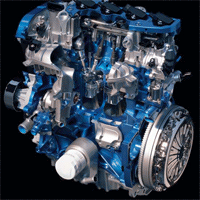Machine automates throttle insertion
Machine automates insertion of compression limiters and threaded inserts into plastic throttle bodies.

Injection-moulded plastic throttle body adaptors have two main advantages over their older aluminium sand-cast counterparts. Not only are they much lighter, they are also cheaper, since no secondary machining operations need to be performed on them after they have been made.
Nevertheless, before they can be attached to an engine manifold, the throttle bodies must undergo a process in which threaded brass inserts and steel-compression limiters are inserted into them to ensure they can withstand the assembly-process conditions.
The steel-compression limiters are designed to protect the plastic assembly from the compressive loads generated by the tightening of bolts that are used to mount them; the knurled bodies of the brass inserts lock tightly into the plastic, providing permanent threads into which screws can be inserted.
To fully automate the insertion process, Nottingham-based automation specialist TQC has developed a machine for automotive components manufacturer Mahle Filter Systems (UK). The machine can insert three cold-steel compression limiters and six hot-threaded brass inserts in each of two throttle body mouldings, enabling one moulding to be produced every 20 seconds.
Register now to continue reading
Thanks for visiting The Engineer. You’ve now reached your monthly limit of premium content. Register for free to unlock unlimited access to all of our premium content, as well as the latest technology news, industry opinion and special reports.
Benefits of registering
-
In-depth insights and coverage of key emerging trends
-
Unrestricted access to special reports throughout the year
-
Daily technology news delivered straight to your inbox










Pipebots Transforming Water Pipe Leak Detection and Repair
Fantastic application.